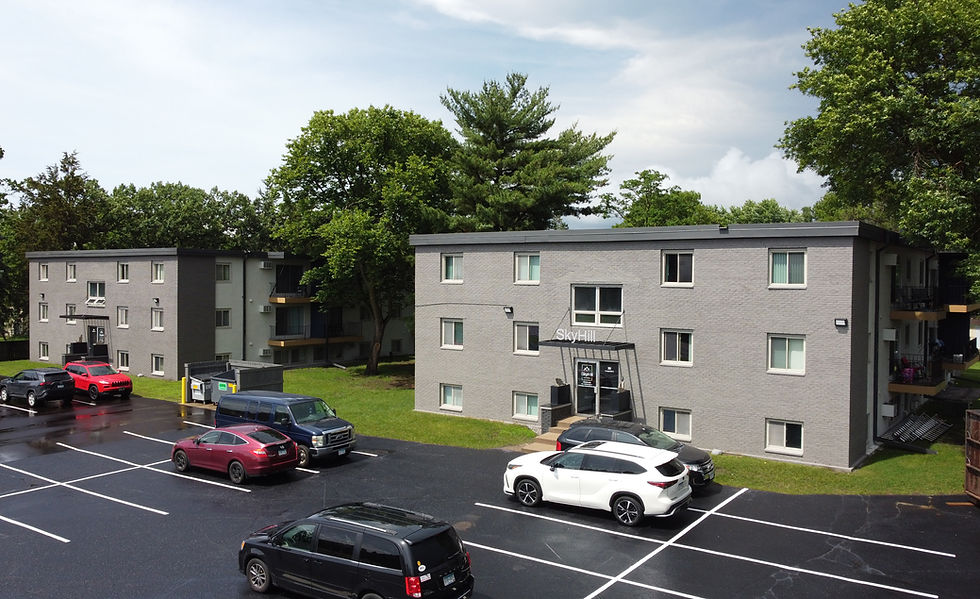How NYC rent-stabilized properties are being pushed into insolvency
- Ridgeview Property Group

- Mar 28, 2024
- 4 min read
Updated: Jan 7
On June 14, 2019, the New York State Legislature made sweeping changes to laws affecting residential landlord and tenant relationships through the Housing Stabilization and Tenant Protection Act of 2019. Since the law's passage, owners of NYC rent-controlled apartment buildings are finding themselves in a precarious position. The ultra-restrictive rent control and vacancy control rules not only have reduced profits for investors, but they put an ever-increasing number of buildings into negative cashflow territory.

Annual rent increases are capped
NYC rent control laws currently allow minimal annual rent hikes: between 2-3%. Meanwhile, operating expenses are rising at a rapid pace. From April 2022 to March 2023, the costs of fuel, utilities, labor, maintenance, administrative expenses, insurance, and taxes within rent-stabilized multifamily buildings surged by 8.1%. More and more, landlords are vocalizing that these regulations fail to adequately account for real-world cost increases.
Vacancy Control
In rent-controlled areas, vacancies are golden for landlords. Tenants rarely move out of rent-controlled apartments, but when life events or job changes lead them to vacate, their landlords receive the rare opportunity to bring the apartment up to market rent. However, a significant change introduced in the 2019 legislative overhaul has imposed a rare restriction in the form of “vacancy control”. Specifically, a vacant unit is now limited to a maximum increase of $89 per month above the previous tenant's rent. This component has emerged as the primary driver behind the gradual financial decline of rent-stabilized apartment buildings in NYC.
“New York is an outlier across the entire country, No other municipality has vacancy control. The 2019 law essentially said that if a renter leaves an apartment, no matter what happens, that rent stays the same. When I describe this to people outside of New York, they are just stunned to hear that this is how it is operated. Even California, with the perception of being very punitive against property rights, has the ability for an owner to reset the rent when an apartment becomes vacant.”
Jay Martin-Housing Policy Expert
Apartments are staying vacant
For cash-strapped landlords, sometimes leaving an apartment vacant is their only option. Imagine you are the owner of a NYC apartment complex that is barely staying in the black. To add insult to injury, one of your tenants stops paying their $600/mo. rent, and moves out overnight. They trashed the apartment on their way out, causing $20K in damage to the walls, doors, cabinets, etc. Your options are, A. pay $20K to restore the apartment and re-lease it for $689 ($600 + the $89 vacant unit increase max), or B. leave the unit vacant, because the $20K investment may not be worth receiving the measly $689 in rent. Assuming the market rent for that apartment was $1,800, ordinarily, this would be an easy decision to renovate and lease out the unit for the higher rent.
The Impact on NYC Real Estate
The owners with minimal debt can absorb the decreasing rental income, but even those with modest debt are feeling the pain. Landlords are finding themselves with negative cash flow plus no ability to refinance thanks to historically high interest rates.
Rent-controlled multifamily buildings in New York City, once regarded as stable and high-growth investments, are now being sold at significant discounts and considered high-risk investments. Last fall, an investment firm sold its portfolio of 14 rent-stabilized buildings for $60 million, five years after purchasing them for $100 million. Whats more, buildings are beginning to sell for less than their land value. That is to say, the raw land would be worth more if there were no rent-restricted apartment buildings sitting on it.
Final Thoughts
Rent control has existed in NYC for decades, and despite the limited rent increases, building owners have remained profitable. It’s the combination of rent control + vacancy control that has put NYC multifamily properties on a negative trajectory. Without a law change, purchasing a rent-controlled building in New York City today is nothing short of buying a depreciating asset. In reality, NYC buyers today are placing a bet that the 2019 law will be repealed in the next 5-10 years. As multifamily loan defaults in NYC continue to rise, politicians are feeling growing pressure to revise the laws. However, efforts to repeal or replace the 2019 legislation have failed up to this point.
-Ben Michel
Ben Michel is the founder of Ridgeview Property Group, an investment firm specializing in acquiring multifamily real estate. Register Here to be notified of available investment opportunities.
Market News
Attempt to Roll Back 2019 Law Fails
According to an article by Curbed, the Supreme Court of the United States declined to hear a challenge to New York's rent-stabilization laws, dashing landlords' hopes of overturning regulations that limit rent increases on nearly 1 million apartments. Led by the Community Housing Improvement Program and the Rent Stabilization Association (CHIP), this effort faced defeat.
Source: Curbed. (2024, Feb 20). "New York Landlords Strike Out at the Supreme Court, Again." https://www.curbed.com/article/new-york-landlords-supreme-court-automatic-renewal-lease-challenge.html
Tips & Tricks
Terms:
Net Operating Income (NOI): NOI is used to measure the profitability of income-producing properties. It represents the total revenue generated from the property minus operating expenses, excluding mortgage payments and income taxes. NOI provides investors with insight into the property's ability to generate income from its core operations before accounting for financing and tax considerations.




